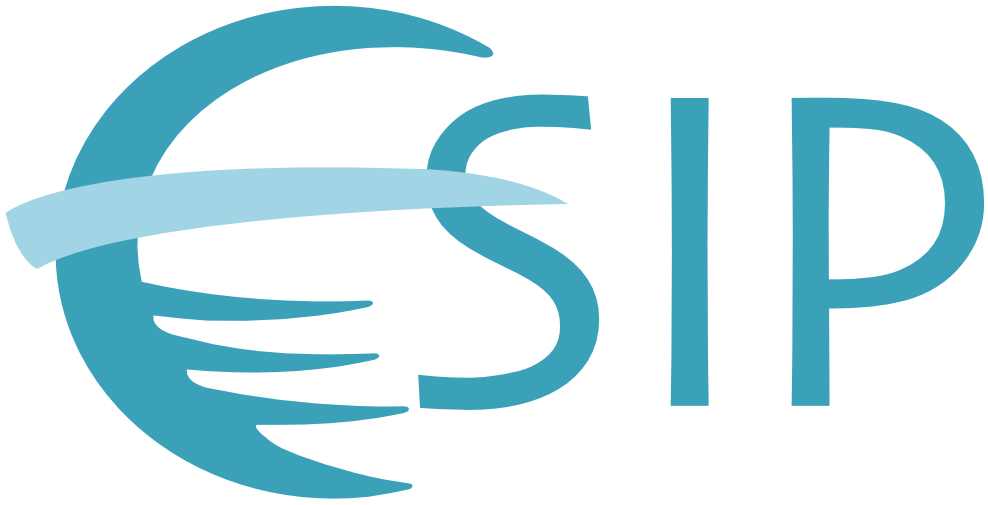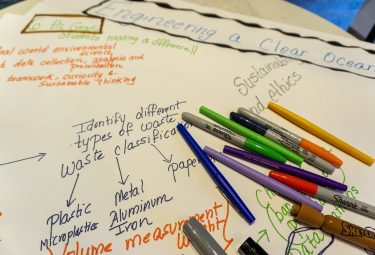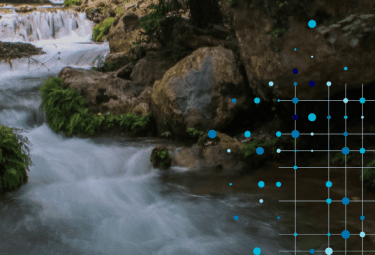Early bird rates are available for registration to the 2026 January ESIP Meeting. Register.
Democratizing Geospatial AI/ML: New ESIP Lab Awards

Innovation and curiosity are core to the Earth Science Information Partners (ESIP) community. Each year, the ESIP Lab funds pilot projects to expand the impact of Earth science data and technology. For the 2025 cohort, researchers focus on how machine learning (ML) and artificial intelligence (AI) can be leveraged in the field of geospatial science.
No two careers in Earth science data look alike. The professionals who make up the ESIP community come from every corner of the research and technology landscape. We have educators seeking new and improved resources for learning through data, scientists weaving computation into their fieldwork, and data stewards bringing structure and collaboration to complex systems.
ESIP Lab grants are driven by the curiosity in this community – a core ESIP value. Because so many disciplines intersect here, ESIP has become a space to experiment, exchange ideas, and put emerging technologies to the test. The ESIP Lab pilot projects have always reflected this, and submissions responding to the 2025 RFP were no exception.
“AI is everywhere right now,” says ESIP Technical Community Director Aaron Friesz. “Our focus on Democratizing AI/ML for Widespread Geospatial and Earth Science Adoption drew interest that completely exceeded our expectations! We were thrilled by the quality of proposals, which showcased innovative tools from predicting critical minerals and tracking marine debris to building essential AI literacy resources for the Earth science community.”
This year’s newly funded projects share a common thread: each tackles how machine learning (ML) and artificial intelligence (AI) can be leveraged in the field of geospatial science.
“I really like the clever but still very pragmatic approach of all the awardees,” says Mark Parsons, ESIP Interim Executive Director. “They're addressing real problems in useful ways, often while reusing a lot of open software.”
We sought proposals that empower broader adoption and effective utilization of AI/ML through the development of practical user-friendly AI/ML tools, applications, or plug-ins that integrate AI/ML functionalities, or of innovative educational and training resources or programs (e.g., workshops, online courses, tutorials) designed to enhance AI/ML literacy among Earth scientists, GIS professionals, and students at various career stages.
ESIP is proud to support four pilot projects through the ESIP Lab this year.
- Open Source MCP Server for Mapping
- Open Estuary AI: Machine Learning Tools for River and Estuary Climate Futures
- Environmental Monitoring through Education, Research & Geospatial Engagement (EMERGE)
- Data Civics Co-Pilot: AI-Powered, Democratized Earth Data for K-12 Education
The ESIP Lab is a space for innovation in Earth science data, technology and computing.
The ESIP Lab provides microfunding to improve the collective tech savviness of Earth science research. Learning new skills — and testing new ideas — takes time, resources and deliberate effort. That’s why our grants process focuses on tying technical goals to learning objectives.
Learn more: esipfed.org/lab
Open Source MCP Server for Mapping
Otto Wagner, Oguz Yetkin, Brian Terry, Analytical Mechanics Associates, Inc.
A recurring issue in the Earth Science data community is the disconnect between advanced AI analytical tools and standardized visualization platforms.
Current systems often have powerful analysis engines, but lack a standard, easy-to-use map visualization layer. Every new AI application requires custom work to connect the analysis to a map, which is time-consuming and inefficient.
A team from Analytical Mechanics Associates, Inc. will create an Open Source Model Context Protocol (MCP) Server for Mapping. The core idea is to give AI systems the ability to control and interact with maps and geospatial data visualizations using simple, natural language, conversational commands, rather than relying on complex programming or traditional click-based interfaces.
“Unlike traditional mapping tools, this component integrates seamlessly with any AI system using the MCP standard,” says the team in their proposal. “AI agents can zoom, pan, highlight data, and manipulate Earth visualizations through conversation rather than clicks. It's not another mapping platform, it's a plug-and-play visualization tool that any AI application can adopt without custom integration work. The result is intuitive, responsive geographic displays that make AI-driven spatial analysis results immediately visible and accessible to users across disciplines.”
The team proposes a few phases to ensure a robust, open-source product:
- Core MCP Server Architecture & Protocol Implementation: this focuses on building the communication backbone, including the JSON-RPC 2.0 layer, an API-based event relay system, and mechanisms to keep the map state synchronized with the AI's commands.
- Map Integration Layer & Visualization: this phase is about the map itself. It involves writing the code that translates the AI's MCP commands into actual map actions using popular mapping libraries and optimizing how large datasets are streamed to the map.
- Alpha Release, Testing, & Community Deployment: the final phase is for release. This includes putting the code on GitHub (open-source), rigorously testing that it works with major AI platforms (like Claude and ChatGPT), and creating public documentation and materials to help the community use it.
Open Estuary AI: Machine Learning Tools for River and Estuary Climate Futures
David C. Banuelas, University of Redlands, Institute for Geospatial Impact
J. Cameron Thrash, University of Southern California
Estuaries are vital ecosystems, serving as critical carbon sinks, providing habitat for endangered species, and buffering coastal communities from flooding and storm events. They are also among the most climate-sensitive ecosystems on Earth.
Despite their importance, forecasting change in estuaries remains challenging. Traditional hydrodynamic and biogeochemical models can generate high-quality predictions, but often require costly software licenses, powerful computing resources, and technical expertise. Moreover, forecasting does not include changes to microbial communities, which play a large role in carbon cycling.
This project will address this by building open-source, machine-learning-based tools that make estuary climate forecasting accessible to a wider audience, and in turn enable decision-makers and frontline communities to plan for an array of different climate scenarios (e.g., various sea level rise rates).
The team from the University of Redlands and the University of Southern California has already seen success in this area through the use of Long Short-Term Memory (LSTM) networks to forecast river discharge in the Mississippi River watershed. LSTMs offer a flexible and accessible alternative to more traditional models. The team will use Newport Bay in California as a demonstration case to refine the LSTM approach for climate and microbial forecasting. Future planning is important here, as the estuary is heavily urbanized and faces pressures including sea level rise, invasive species, sedimentation, and water quality concerns.
Goals and outcomes of the project will include:
- An open-source Python/R Package that uses an LSTM approach to forecast future salinity based on climate projections. The software package will also include options for spatial predictions of estuarine bacteria.
- A user-friendly plugin tool for ArcGIS and QGIS software to generate scenario-based salinity and inundation maps visually.
- A training suite consisting of comprehensive tutorial notebooks and cleaned, organized training datasets for users.
- Case studies that validate and demonstrate the tools using real-world data from the Upper Newport Bay Ecological Reserve in California and a Gulf Coast estuary.
Outreach and collaboration are another major component of the project, focusing on inclusion and education. The team will host a community workshop to train stakeholders on tool usage; will integrate the tools into California’s Youth Community Access programming to teach coding, geospatial concepts, and climate resilience to younger students. The grant will also collaborate with Redland’s Native Student Programs and aim to support youth programming for first generation college students.unity Access programming to teach coding, geospatial concepts, and climate resilience to younger students; and a dedicated effort will be made to train first-generation and Native students through collaborations with Native Student Programs.
Environmental Monitoring through Education, Research & Geospatial Engagement (EMERGE)
Di Yang, Olivia Zhang, University of Florida and Geospatial Digital Informatics Lab
Caroline Nickerson, Florida Community Innovation
Citizen science (also known as participatory science) programs generate massive volumes of valuable data, but much of this data remains underutilized due to a lack of easy-to-use analytical tools.
While AI can be a huge asset in processing and extracting insights from data, there are limited scalable resources that connect participatory science with AI at a community level, especially for individuals without prior technical experience.
This project will create the infrastructure and educational resources needed to maximize the scientific return on these community efforts. The team aims to make advanced Geospatial AI (GeoAI) accessible to a non-expert audience through educational resources featuring open-source data and tools. Additionally, through outreach and partnerships with rural libraries, community organizations, and local schools, they want to ensure that these skills and resources reach traditionally underserved communities, fostering equity in STEM education and environmental resilience efforts.
The project will specifically use data from two well-established NASA initiatives: GLOBE Mosquito Habitat Mapper and GLOBE Land Cover. By focusing on these specific, real-world datasets, the curriculum will provide immediate, tangible examples of how AI can transform raw participatory science observations into actionable scientific insights.
The project deliverables are designed to be practical, open-source, and layered for different skill levels:
- A Digital Geospatial AI Curriculum will be openly hosted on GitHub and be divided into beginner, intermediate, and advanced sections. It will feature interactive code tutorials using Python libraries like GeoAI (for deep learning), Folium (for interactive mapping), and geemap (for GEE visualization).
- Facilitator guides for educators to bring the curriculum to their schools and organizations.
- A webinar series will feature guest speakers to discuss the intersection of AI and participatory science, prompting broad community engagement.
- An in-person hackathon will bring together students, educators, and community partners to apply the new GeoAI techniques to real participatory science datasets in a hands-on, practical application of the curriculum.
Data Civics Co-Pilot: AI-Powered, Democratized Earth Data for K-12 Education
Nick Okafor, Joan Jungbin Lee, Ethan Evans, trubel&co
Teachers want to use local Earth data in class – such as heat, flooding, and air quality. But hunting down datasets and building lessons takes hours.
This project by a team from trubel&co proposes to build an AI helper designed to dramatically simplify how K–12 teachers use real-world Earth science data in their classrooms, fostering data literacy and civic engagement among students.
CivicScape Co-Pilot will help teachers to find localized, visualized, and annotated datasets and to draft ready-to-teach map-based activities in minutes, aligned to different grade levels and standards. Built to democratize geospatial education through AI, it will empower interdisciplinary classrooms to use real Earth data for hands-on learning, civic storytelling, and better decisions in their own neighborhoods with transparent sources and step-by-step guidance.
The deliverables center around creating the data foundation, the AI tool, and a pilot program for validation:
- Local Dataset Finder & Map Gallery (Open Source): this aggregates, visualizes, and annotates localized Earth data on a public ArcGIS Hub. All metadata will be indexed in an Airtable catalog using clear, plain language descriptions.
- Lesson Generator Prototype (AI Co-Pilot): this is the teacher-facing AI helper. This tool reads the pre-vetted data catalog and metadata to instantly draft a lesson plan tailored by location, grade, and subject in under 10 minutes.
- In-Classroom Pilot, Testing, and Research: a small-scale pilot study conducted with 12-15 Bay Area teachers will gather feedback on usability and measure the tool's effectiveness, potentially reaching up to 500 students.
A crucial design decision for the AI co-pilot is ensuring transparency and safety. The AI will only draw content and information from the pre-vetted, controlled dataset catalog, preventing the AI from generating inappropriate content or relying on unreliable, unverified data sources, guaranteeing the scientific integrity of the lessons.
Outreach done with this project will be focused on transparency and engagement within the scientific and educational communities, and all underlying code and schemas will be made public in a GitHub repository. Progress will be demonstrated to key groups and relevant ESIP Clusters. The team plans to present the results at major conferences, including AGU, AAG, and the Esri Education Summit.



